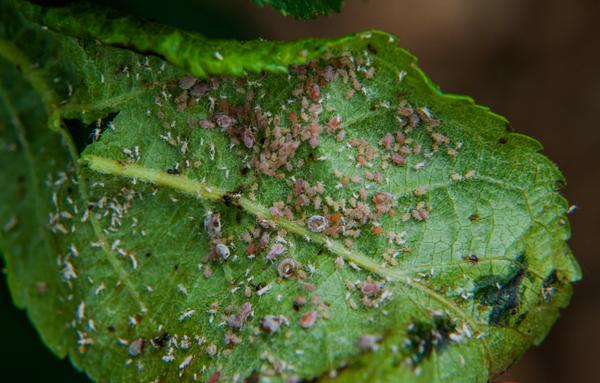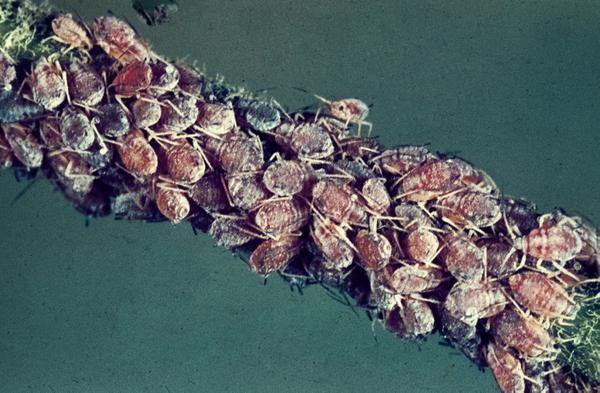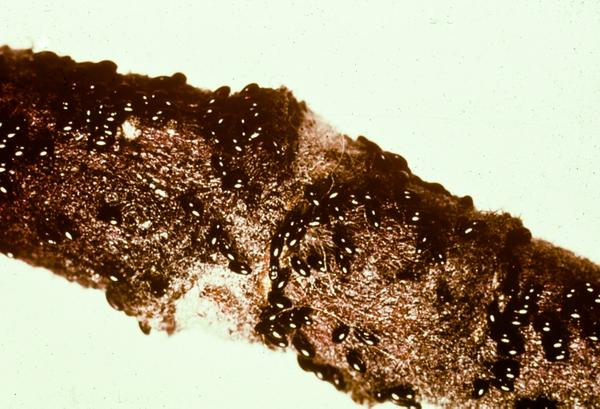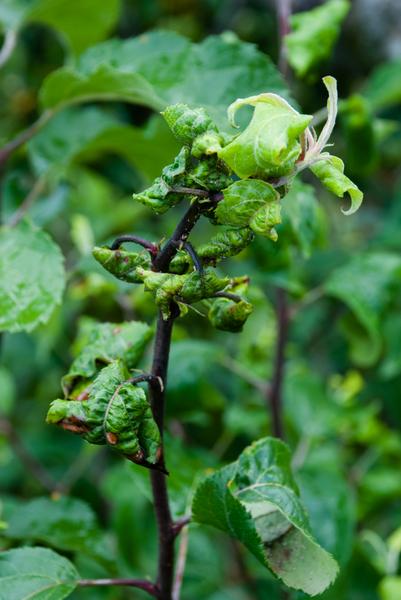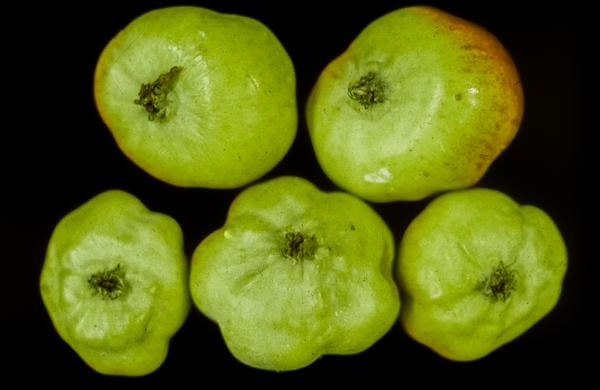Background and Description
Rosy apple aphid (Dysaphis piantaginea; RAA) was introduced into North America from Europe in the late 1800s. It is the most destructive aphid pest of apple in the Southeast, and it may also feed on pear. During the summer RAA populations move to plantain as part of their regular life cycle.
The appearance of RAA changes with host and season. On apple, RAA are generally wingless and have a slight purplish to rosy body color that is somewhat obscured by a waxy coating. The fall and spring winged adults, which migrate to and from apple, are brownish green with a black head, black thorax and transparent wings. Adults are about 3/32 inch (2.5mm) long. The overwintering eggs are glossy black and about 1/100 inch (0.4mm) long.
Life history
RAA overwinter as eggs attached to the bark of twigs and branches, particularly in hidden crevices and depressions. Eggs begin to hatch around bud break. The young aphids, or nymphs, which hatch from the eggs are all females and are called "stem mothers." Young aphids initially feed on the outside of leaf buds and fruit clusters before working their way onto new leaves and fruit. The stem mothers mature and, without mating, give birth to living nymphs. Several generations are produced on apple before winged aphids appear and migrate from apple to plantain (showing a preference for narrow-leaved or English plantain). The migration to plantain is usually completed by late June. Winged aphids produce wingless individuals, which feed and reproduce on plantain until fall. Then winged females fly back to apple and give birth to true egg-laying females. Males develop later and then fly back to apple to mate with females, which lay overwintering eggs.
Damage
Early-season feeding can cause leaves to be curled and twisted and fruit to be undersized, hard, and knotty. Populations vary from year to year, with the greatest injury typically occurring during cool springs when conditions allow RAA to increase more rapidly than their natural enemies.
Monitoring and Control
RAA is a common apple pest. From the tight cluster stage of flower development through the second cover spray, sample 10 interior shoot terminals from each of 10 sample trees and record the number of terminals infested with one or more wingless aphids. Implement control measures when more than 10 percent are infested. Insecticides applied with the delayed dormant oil application have historically been used for control of RAA, but control is best accomplished from the tight cluster to pink stages. Aphid infestations that develop following bloom should be promptly controlled with curative treatments. Biological control of RAA is important since the aphid is preyed upon by many natural enemies, including lady beetles, syrphid flies, and lacewings, but biological controls alone are usually not satisfactory.
See the "Pest and Orchard Management Program," "Pesticide Resistance Management," and "Relative Effectiveness of Insecticides and Miticides" sections of the Integrated Orchard Management Guide for Commercial Apples in the Southeast for the most current control guidelines.
Publication date: Feb. 23, 2015
N.C. Cooperative Extension prohibits discrimination and harassment regardless of age, color, disability, family and marital status, gender identity, national origin, political beliefs, race, religion, sex (including pregnancy), sexual orientation and veteran status.

